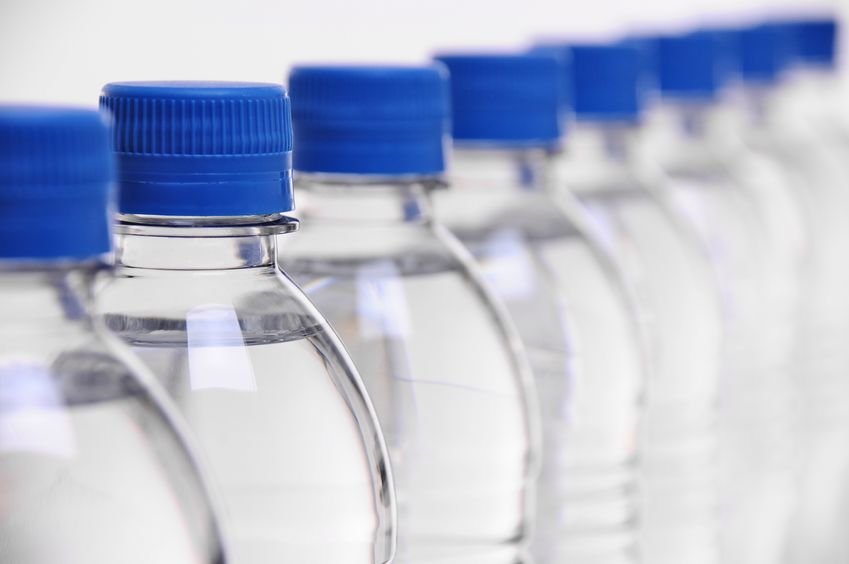In a 2015 study conducted by the Beijing Center for Disease Control and Prevention, researchers found Bisphenol AF has strong links to breast cancer.
More than 80,000 chemicals are registered for use in the United States. Each year, an estimated 2,000 new ones are introduced for use in such everyday items as foods, personal care products, prescription drugs, household cleaners, and lawn care products.
More concerning is the fact that more research is coming out that these chemicals are indeed more harmful than once thought.
In 2012, Green Med Info posted a consumer alert that the awareness that a plastic byproduct, BPA, had hormone-mimicking effects, which led manufactures to replace it with alternatives. Unfortunately, this replacement wasn’t proven to be safe and previous precautionary studies seemed to have been ignored. In 2002, a precautionary study on various forms of BPs concluded, “All seven BPs tested here showed moderate to slight acute toxicity, no mutagenicity, and weak estrogenic activity as well as BPA. Some of the BPs showed considerably higher estrogenic activity than BPA, and others exhibited much lower activity. Among the tested BPs, two compounds, i.e., bisphenol-S (bis(4-hydroxydiphenyl)sulfone) and bis(4-hydroxyphenyl)sulfide, have never been reported for their estrogenic activity previously.
Furthermore, in 2005, researchers from concluded that “BPS showed comparable estrogenic activity with BPA” using an in vitro testing system. Finally, another study forewarning the effects of plastics in 2011 concluded, “Almost all commercially available plastic products we sampled—independent of the type of resin, product, or retail source—leached chemicals having reliably detectable EA, including those advertised as BPA free. In some cases, BPA-free products released chemicals having more EA than did BPA-containing products.”
The Endocrine Society’s second Scientific Statement on environmental endocrine-disrupting chemicals (EDCs) was recently released. According to the abstract, “The full Scientific Statement represents a comprehensive review of the literature on seven topics for which there is strong mechanistic, experimental, animal, and epidemiological evidence for endocrine disruption, namely: obesity and diabetes, female reproduction, male reproduction, hormone-sensitive cancers in females, prostate cancer, thyroid, and neurodevelopment and neuroendocrine systems. EDCs such as bisphenol A, phthalates, pesticides, persistent organic pollutants such as polychlorinated biphenyls, polybrominated diethyl ethers, and dioxins were emphasized because these chemicals had the greatest depth and breadth of available information.” Among other health concerns, EDCs were in fact linked to hormone-sensitive cancers.
Naturopathic doctors will not be surprised by this fact and this is why it’s important to use organic and natural personal care products and household products that do not contain these compounds which can increase estrogen activity. I like to direct my patients to the Environmental Working Group’s Database as well as the Campaign for Safe Cosmetics for safer alternatives.
 Sarah Lobisco, ND, is a graduate of the University of Bridgeport’s College of Naturopathic Medicine (UBCNM). She is licensed in Vermont as a naturopathic doctor and holds a Bachelor of Psychology from State University of New York at Geneseo. Dr. LoBisco is a speaker on integrative health, has several publications, and is a certification candidate in functional medicine. Dr. LoBisco currently incorporates her training as a naturopathic doctor and functional medicine practitioner through writing, researching, private practice, and through her independent contracting work for companies regarding supplements, nutraceuticals, essential oils, and medical foods. She has a small, private wellness consultation practice through telephone and Skype. Dr. LoBisco also enjoys continuing to educate and empower her readers through her blogs and social media.
Sarah Lobisco, ND, is a graduate of the University of Bridgeport’s College of Naturopathic Medicine (UBCNM). She is licensed in Vermont as a naturopathic doctor and holds a Bachelor of Psychology from State University of New York at Geneseo. Dr. LoBisco is a speaker on integrative health, has several publications, and is a certification candidate in functional medicine. Dr. LoBisco currently incorporates her training as a naturopathic doctor and functional medicine practitioner through writing, researching, private practice, and through her independent contracting work for companies regarding supplements, nutraceuticals, essential oils, and medical foods. She has a small, private wellness consultation practice through telephone and Skype. Dr. LoBisco also enjoys continuing to educate and empower her readers through her blogs and social media.
References:
Consumer Alert: BPA-Free Goods Still Contain Toxic Bisphenol. Green Med Info. June 1, 2012.
Environ Toxicol. 2002 Feb ;17(1):80-6. PMID: 11847978
Environ Toxicol Pharmacol. 2005 Jan;19(1):121-30. doi: 10.1016/j.etap.2004.05.009.
Environ Health Perspect. 2011 Jul 1; 119(7): 989–996.




